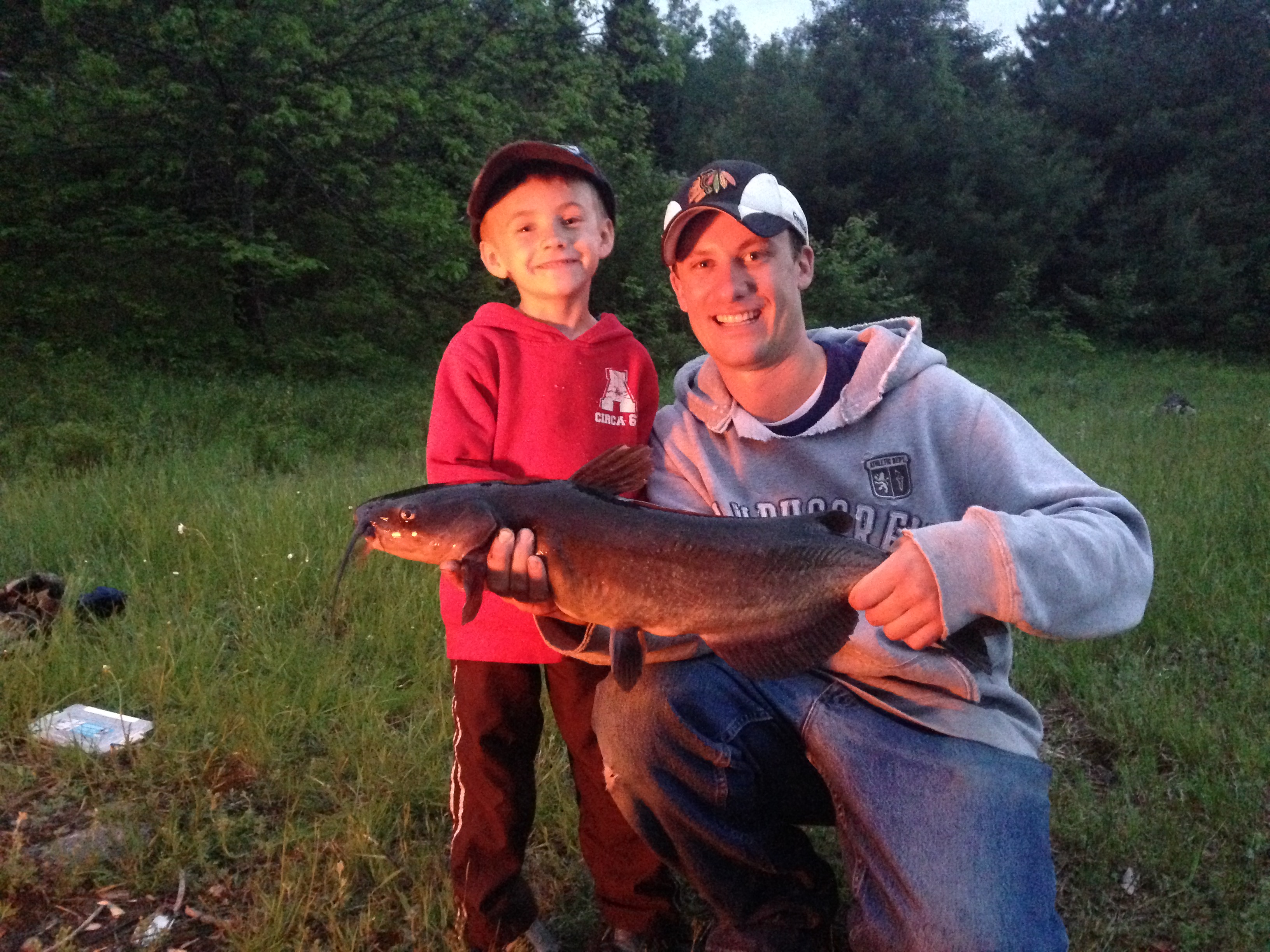Where is the first place you ever fished? Was it off of a fancy boat, a relative’s dock, a local bridge, or a pier? Or was it from a plain old untouched shoreline? Even with all these options, most of us never need to go further than the local shoreline with a favourite rod and tackle box filled with our most trusted supplies. Nothing beats escaping to a favourite fishing hole, hoping that the Big One awaits.
All too often we’re caught up thinking we need to be out in the middle of the lake, or that we need the best of the best gear and electronics to catch fish. The reality is that some of the most memorable and best days take place on the shoreline with a great group of friends. The species, numbers and size is irrelevant—it’s more about the camaraderie. But don’t get me wrong—casting out and pulling in a fish or two never hurt the morale.
Any species that puts up a fight on the end of your line is a thrill. Especially for children, nothing beats an area filled with panfish and constant action. Some of my favourite shoreline species to target are catfish, suckers, bass, pike and panfish (perch, sunfish and bluegill). These species all require a fairly simple approach that either keeps your bait on bottom, or suspended in an area your targeted species can’t resist.
The Right Presentation
For bottom feeding species I choose to use a standard jig tipped with a worm or minnow. If I’m in current, a Carolina rigged presentation is best suited. The later approach keeps the bait near bottom while allowing the current to move and stir up your bait in a natural way.
This is my all-time favourite approach to catching catfish and suckers; it puts a nice chunk of salted herring, Gulp® catfish dough or worms right in the strike zone that they simply cannot resist. The fight a channel catfish gives is something to experience—they are one of the hardest pulling species that I have come by. Anything over 4 lbs and you better be ready to fight to the bitter end as soon as the hook is set. Suckers can often be found in abundance, making it oodles of fun to pull them out one after another.
Suspended presentations are most often achieved through the use of a float or many conventional artificial presentations. A common red and white bobber above a hook, tipped with a lively worm or minnow, is a staple presentation that every last one of us has used. Think it over long and hard and try to call me a liar. This presentation in one of the best to get children or beginners into fishing and is most commonly used for panfish. The most important part is evaluating the distance required from your float to your hook—this is your leader length and will ensure you are in the area where fish are feeding.
Looking for Fish Habitat
Take a moment to evaluate your surroundings and look for submerged vegetation or cover. Ideally you’d like to have your bait sitting along the tops of the weeds or structure if not just below. The other presentations for larger fish in the area include, but is never limited too, jerk baits, spoons, spinnerbaits, inline spinners, and paddle tail swimbaits. Just cast them out and retrieve to cover water and hope to catch the active, larger fish in the area.
When setting up on shore, look at the water for any kind of transitions or current breaks. Picture yourself sitting down there anticipating your meal to arrive at just an arm’s length. Fish tend to be lazy and want to relate to ambush points—these include transition areas between rocks and sand, weeds and sand, rocks and weeds, etc. As long as there is a difference or some type of structure to use as cover, you will be able to find fish.
Rivers are a bit different, as current acts as a constant supply of food being delivered to your door. Look for eddies or slack water with fast moving water directly adjacent. Cast upstream so your bait flows directly past your desired target. It is pretty much a replenishing buffet at a fish’s disposal, so present something appealing and the results should speak for themselves.
We are blessed in Northeastern Ontario to have so many bodies of water to choose from. I can’t think of any community that isn’t on or near a body of water of one type or another. Many local waterfronts are excellent areas to cast out in hopes of a bite along with exploring the many fishy looking shorelines. I always have a rod and tackle box in my vehicle for to take advantage of the many lakes and rivers in our region along all my travels.
So get out there and see what this fall has in store for you. If permitted, start a camp fire, cast out and enjoy yourself. This is a great time of year as the bugs are gone, the temperatures are bearable, and the fish are starting to feed in anticipation of the winter months ahead.







